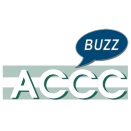National Oncology Conference: Framing Issues & Finding Answers
by Amanda Patton, ACCC, Communications
Featured speaker Peter Bach, MD, MAPP, addressed a packed room in the opening session of the ACCC National Oncology Conference on Oct. 22, in Portland, Oregon. Dr. Bach is Director, Center for Health Policy and Outcomes, Memorial Sloan Kettering Cancer Center.
Dr. Bach’s remarks centered on four prime issues challenging oncology today: the cost of cancer drugs, the need for oncology to do a better job on comparative outcomes research, the 340B drug pricing program, and the importance of incorporating end-of-life care into cancer program services.
Finding a rational way to address drug costs matters on both the macro level [in terms of the impact of healthcare costs nationally] and on the micro level at point of care when “drugs are being left at the pharmacy counter because patients can’t afford the copay,” he said.
Conference sessions throughout the day focused on challenges and innovative solutions that can have powerful micro- and macro-level impacts on cancer programs and providers, and the patients they serve: From “how to” sessions on benchmarking salaries, applying lean principles for staffing, establishing a virtual tumor board, distress screening, and preparing for alternative payment models, and more, to a big picture session on Advancing Quality—from Oncology Medical Homes to Integrated Delivery. One cross-cutting takeaway message: work across disciplines and siloes—think about how to collaborate outside the box and across the care continuum.
Stay tuned for more conference highlights. Follow conference on Twitter at #ACCCNOC.
Strength in Numbers
By Amanda Patton, Manager, Communications, ACCC
By the time ACCC’s Annual National meeting wrapped up this week, attendees had heard plenty of numbers. Here is just a small sampling:
7.1 million Estimated number of enrollees under the ACA’s health insurance marketplaces
70% Percent of plans on insurance exchange that are considered “narrow networks”
30 Number of states that have now passed oral parity legislation
13.7 million Current number of cancer survivors in the U.S.
1.5 million Number of new cancer cases diagnosed annually
18% Percent of U.S. population that will be Medicare eligible by 2020
17 Number of times Congress has passed a “doc fix” to the SGR
All these figures and more added up to some overarching themes from this year’s meeting sessions:

Strength in numbers is needed to make the voice of community cancer care heard on Capitol Hill. “At the end of the day, I think we need more clinical voices in the policy setting,” said keynote speaker Kavita Patel, MD, of the Brookings Institution. “You don’t want Medicare or Congress thinking about cancer care without [your voices being heard].”
Patient-centered care requires open communication. In Tuesday’s panel on “What Are the Costs and Where Is the Value in Cancer Care?” panelists agreed that discussion about value in cancer care is complex but must be patient-centered. “For patients, value has a number of different meanings,” said panelist Nancy Davenport-Ennis of the Patient Advocate Foundation. “Patients want to have open dialogue with physicians about what the options are and how they are going to pay for this [treatment].”
The need for good communication with patients was also part of an earlier panel discussion on Multidisciplinary Care in Oncology. Smaller hospitals and cancer programs trying to create multidisciplinary programs should first look to the relationship that needs to exist between patients and the team, said panelist Tom Kean, MPH, of C-Change. It’s important to ask: “What does the patient value?”
The future oncology care delivery structure & workforce will look different. Given the perfect storm brewing of escalating costs, a growing demand for oncology services, and a projected future shortage of oncologists, the way we deliver cancer care will have to change. Several presenters circled around the medical home (possibly in combination with some type of pay-for-performance) as potentially a good fit for oncology—in part because many cancer centers are already providing the services encompassed by this model. And several sessions touched on how the cancer care workforce will have to change to meet the projected demand. This new “care force” will not only include more non-physician providers, but also is likely to have non-clinical care providers and make increased use of community resources.
One shift that is already underway in some cancer programs is careful assessment of skill sets. Multidisciplinary Care in Oncology panelist Marie Garcia, RN, OCN, said, for example, her practice took a close look at the skill set needed to provide survivorship services. For their survivorship program was a nurse practitioner needed? Could the position be filled by a nurse? Or a patient navigator? “In a value-based world, you need everyone on the team performing at the top of their licenses,” said co-panelist Mark Soberman, MD, MBA, FACS.
We must be the change. Across sessions the recurrent message was that cancer providers need to be proactive. It’s fine to start small, but start now, assess ways to demonstrate value, explore new payment models, and work more collaboratively with payers, providers, and community resources.



leave a comment